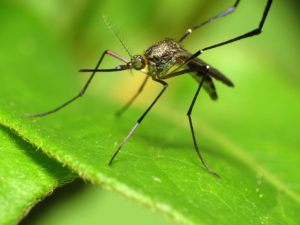 Identification: There are over 4,000 species and sub-species of mosquitos, but they all share certain common characteristics. All mosquitos have 3 segments including their head, thorax, and abdomen. They have 2 antenna that allow them to sense vibrations and gives them a sense of hearing. Mosquitos have 2 wings that they use to move from place to place. Both male and female have a proboscis, which is a long tubular section they use for feeding. Interestingly, female feed on blood from animals and humans, while males feed on nectar and plant juices.
Identification: There are over 4,000 species and sub-species of mosquitos, but they all share certain common characteristics. All mosquitos have 3 segments including their head, thorax, and abdomen. They have 2 antenna that allow them to sense vibrations and gives them a sense of hearing. Mosquitos have 2 wings that they use to move from place to place. Both male and female have a proboscis, which is a long tubular section they use for feeding. Interestingly, female feed on blood from animals and humans, while males feed on nectar and plant juices.
Behavior & Diet: A female mosquito can lay up to 100 eggs at one time. Females lay their eggs in stagnant bodies of water that can be as large as a pond or as small as a puddle. Within 7-10 days, larvae molt 3-4 times and then enter the pupae stage. At this stage, you can see them moving around in the stagnant water. Once fully developed, the larvae will become adult mosquitos, dry their wings and fly away. The entire life cycle takes about 10 days to emerge as an adult.